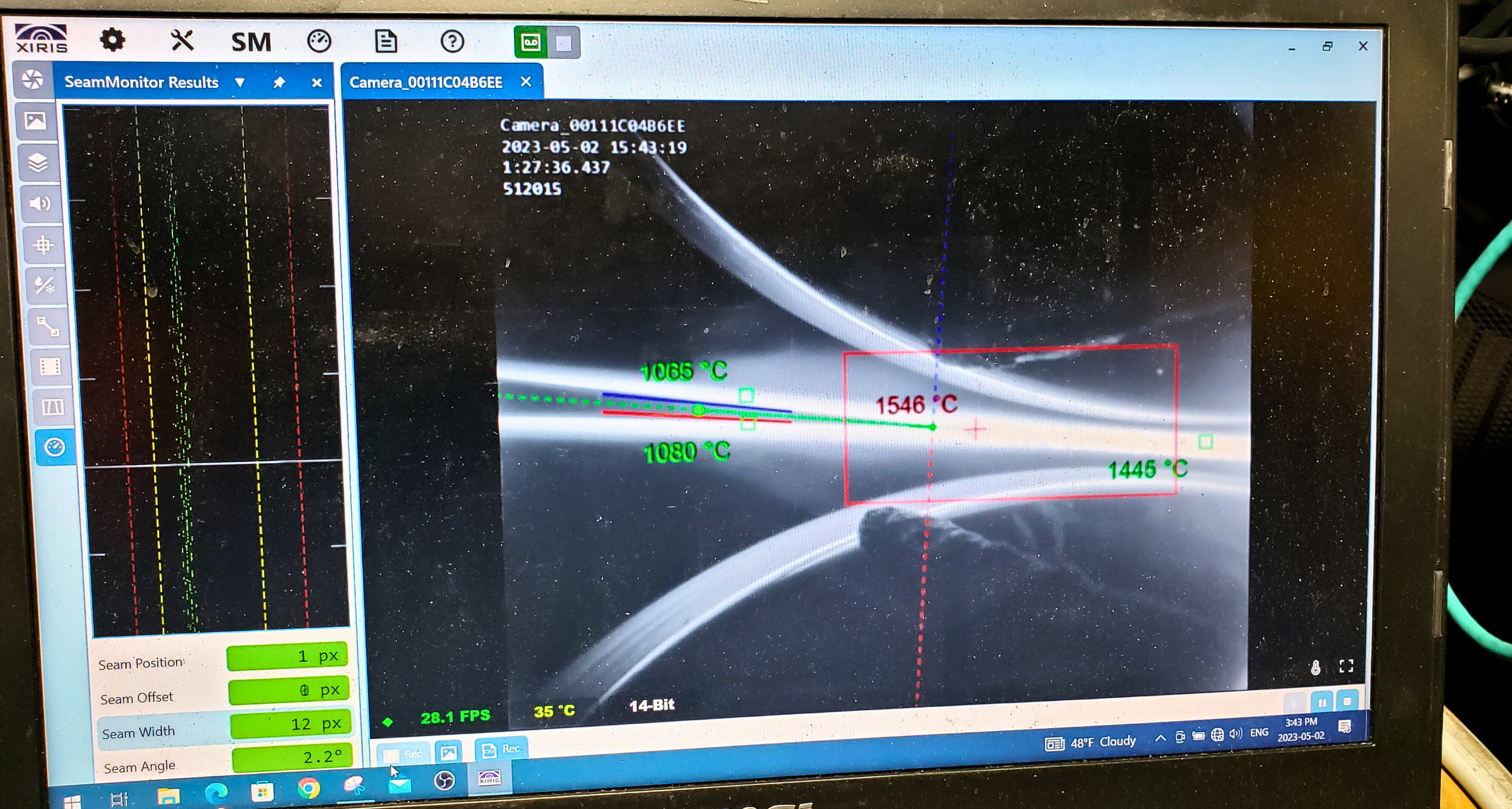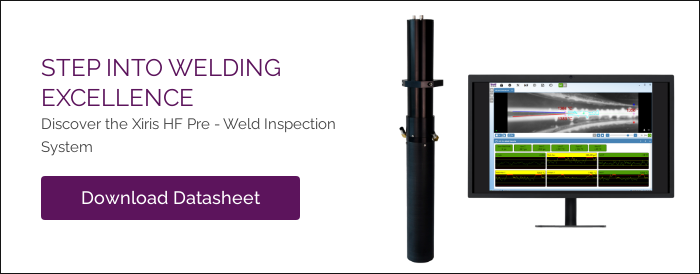In tube and pipe manufacturing, safety and process stability are crucial. A North American pipe producer partnered with Xiris to provide real-time visibility of the weld V while ensuring operator safety. They implemented an HF Pre-Weld Inspection System with a custom camera and software tools, resulting in enhanced safety and process stability.
The Challenge:
A large North American pipe producer was interested in providing their operations staff with a remote view of the weld V during run time, as a safety improvement so that the operator does not have to climb on the mill to see the process.
In addition, if the camera could provide a clear view of the weld V that could be monitored remotely, rather than trying to look through the steam generated in the mill, would enable their operators to work toward a “hands off” welding process, reducing the need for operators to reach into the weld environment to make checks or adjustments of the welding process.
Key Objectives:
The pipe producer was most interested to observe some mechanical variations in their process, namely:
- Breathing on the V gap, or a cyclical instability of the tube of the space between the two strip edges just after the induction coil. Such a phenomenon could be the result of imperfect forming rollers, varying stresses along the pipe or variances in the heat going into the tube;
- Position of the weld apex as it relates to the weld squeeze point. The weld apex is defined to be the point on the tube where the two strip edges of the tube come together and first touch. Its location is a result of a number of factors including the V angle, the forming roll position and pressure and inductive energy flowing into the pipe;
Customer Success:
A Xiris SWIR thermal camera was encased in a specially designed housing and placed at the HF weld environment to look at the weld “V” immediately after the induction coil. The housing was designed to use air flow to ensure that no steam, smoke or other particulates would reach the camera optics and interfere with the image.
Process tailored software tools were implemented for ease of use by the weld operator to detect the weld apex and any breathing that could occur in the seam gap on the pipe.

Through the use of image processing software tools, the operator was able to get process feedback and set working range limits that could establish best practices. The goal of giving the operator measurable process feedback with alarms was achieved so that the operator receives early indicators of any process anomalies.
Outcomes and Benefits:
The implementation of the HF Pre-Weld Inspection System led to significant outcomes and benefits:
-
Enhanced Safety: The remote monitoring solution provided a safer approach to overseeing the weld process, reducing the potential for operator injuries associated with physical inspections.
-
Improved Stability: The pipe fabricator achieved a more stable welding process, resulting in the production of consistently high-quality products. By addressing mechanical variations and closely monitoring the weld parameters, the process became more predictable and reliable.
In partnership with Xiris, the pipe producer in the tube and pipe industry successfully enhanced weld process safety and stability. The integration of an HF Pre-Weld Inspection System equipped with specialized camera technology and software tools not only mitigated safety risks but also ensured greater process consistency. This case study underscores the value of innovation and technology in achieving operational excellence and safety in manufacturing.
To learn more about how you can implement Xiris inspection systems, reach out to our product experts.
Stay up to date by following us on social media or subscribe to our blog!




.png)


